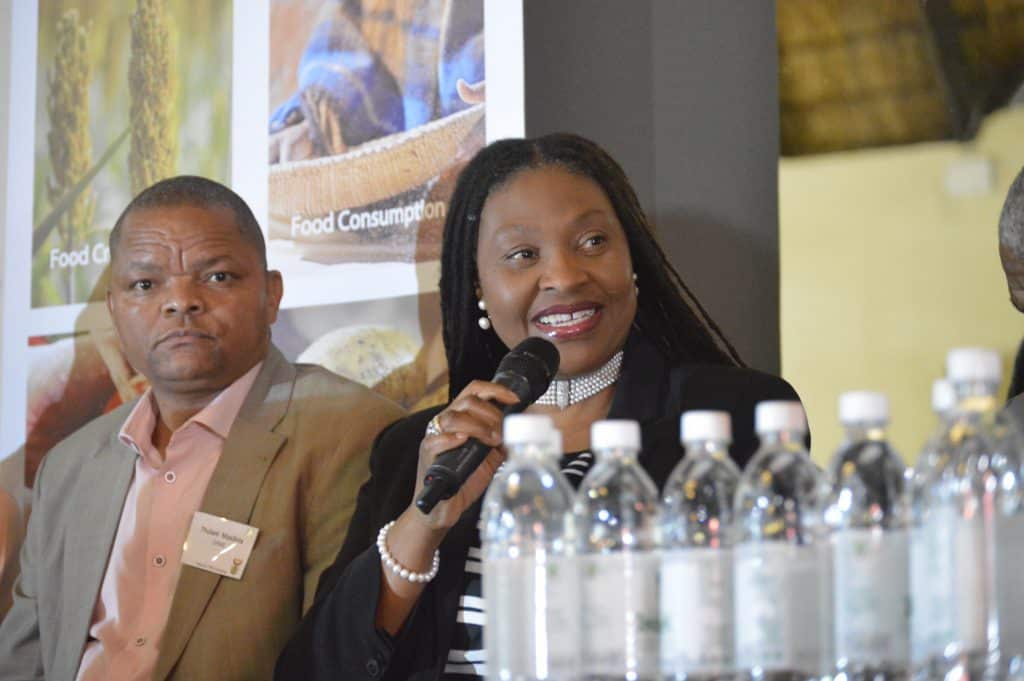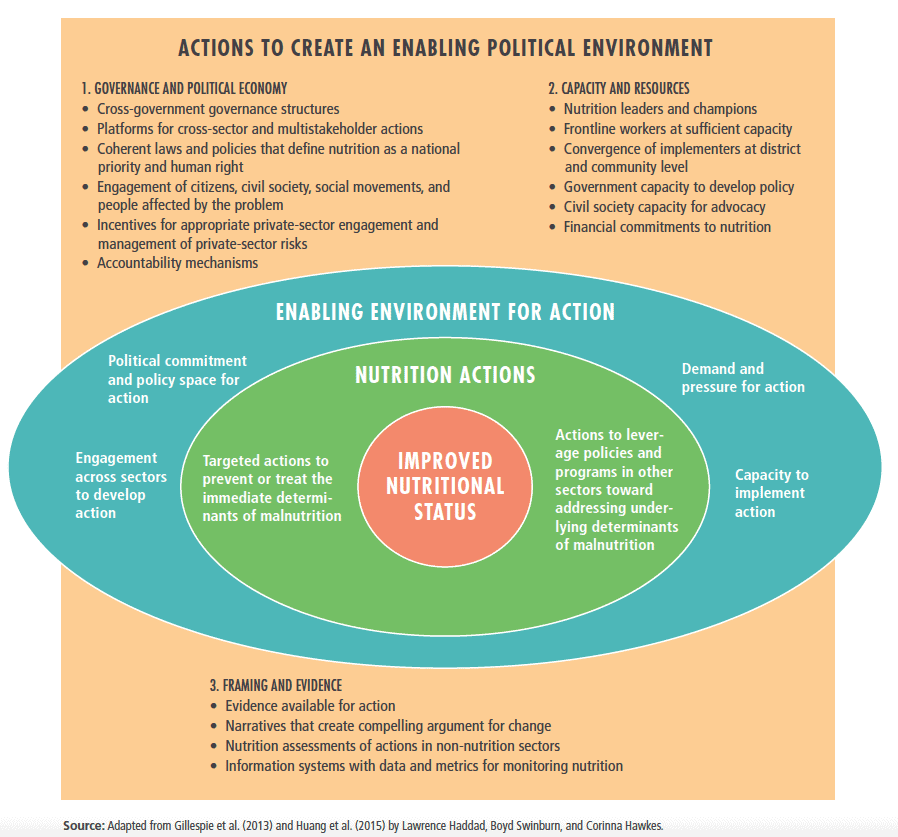
The panel included government representatives from agriculture, social development, health rural development and land reform as well as Yvonne Chaka Chaka, the well known singer and UNICEF Goodwill Ambassador.
Lawrence Haddad presented an overview of the 2015 Global Nutrition Report to an eager-to-engage multi-sectoral audience, at the Indaba Hotel in Johannesburg on Friday 2 October, 2015. It was as good choice for such an event as in isiXhosa, an iNdaba is an important meeting at which matters affecting the community are discussed.
Over 100 South Africans attended the event, from multiple government departments, academia, civil society, the private sector, and media. The thought-provoking facts in the presentation, lively panel discussion and engaging question and answer session highlighted the need for innovative thinking in how South Africa can get traction on reducing the prevalence of malnutrition. Lawrence’s presentation provided us the opportunity to reflect on our position in global rankings exposed and challenged us.
The discussion’s timing was perfect following the initiation of the Sustainable Development Goals and at a time when South Africa is grappling with how we will deliver on the stretching targets elaborated in the Malabo Declaration of 2014. South Africa’s malnutrition statistics are contrary to expectation for a developed country that is nationally food secure. Despite gains in reducing poverty since the election of a democratic government in 1994, and halving self reported hunger through broad coverage with social grants, a plethora of nutrition interventions and over 70 food security-orientated government programmes, South Africa’s stunting rates are no better than many African countries, and far greater than that of countries with similar Gross National Incomes. One in four children is potentially severely disadvantaged for life as a consequence of under-nutrition. At the same time, South Africa still has a high prevalence of hidden hunger due to micro-nutrient deficiencies, and a triple burden of hunger, with over 60 per cent of women being over-weight or obese.
The panel included government representatives from agriculture, social development, health rural development and land reform as well as Yvonne Chaka Chaka, the well known singer and UNICEF Goodwill Ambassador. Each panelist was pressed by the Panel Chair, Eric Buch (Dean of the Faculty of Health Sciences at the University of Pretoria) to explain what their sector is doing to address South Africa’s nutrition problems.
The report’s six C’s (Commitment, Coverage, Coherence, Cash, Collaboration and Counting data) found fertile ground among the South African government and nutrition community, encouraging them to review current interventions and policies to create more coherent strategies with greater impact on shifting the sticky rates of stunting and increasing trend of over-weight.

The report called for increased levels of commitment, providing examples of how other countries have succeed and providing South Africa with encouraging examples. While transformative service delivery targets in other sectors such as housing, sanitation, electrification etc. hold government accountable and have shown what the country is able to do to change the lives of the poor, we are not regularly and publically monitoring programme coverage and need to do a lot more in this area.
Policy coherence is certainly on the radar with the country’s rolling reviews of various programmes and government resolve to drive coherence on key areas of growth and development. An additional ‘C’ put on the table by participants during the lively discussion session was the importance of building the “capacity” to conduct such reviews of policies and programmes to develop coherence in policy as well as delivery. Capacity is desperately needed in more comprehensive delivery and accountability systems at all levels – starting with the community. In particular, South Africa was unable to report on 22 indicators relevant to food security and nutrition, showing that we need to invest more in data to be able to monitor progress and evaluate the cost and impact of programmes.
It is not very clear whether the country needs to invest more cash into more nutrition initiatives. However, we are doing a great deal through population-wide programmes such as compulsory fortification of staple foods and targeted programmes for specific groups in the population. But, making these more nutrition focused and helping other sector programmes deliver more for nutrition, is a priority. Another poignant ‘C’ raised from the floor was communication – something we do not use creatively enough to encourage behaviour change, share national strategy and report on progress.
Sheryl Hendriks and Julian May, Directors of the Department for Science and Technology and National Research Foundation Centre of Excellence in Food Security, co-hosted by the Universities of Pretoria and the Western Cape. The event was part of the CoE’s World Food Day programme. This article was first published on http://www.globalnutrition.org.
related Articles
First in-person STEERCOM since COVID-19
For the first time since the COVID-19 pandemic, the DSI-NRF Centre of Excellence in Food Security (CoE-FS) hosted its first…
Five reasons to support draft Labelling Regulations R3337
The are numerous public health benefits of the draft Labelling Regulations R3337. Photo Nathália Rosa/Unsplash. South Africa’s Minister of Health…
Breede River Municipality hosts unique food security learning journey
“During two sunny winter days in early May, the Breede River Municipality (BVM) hosted a ‘learning journey’, an innovative…



